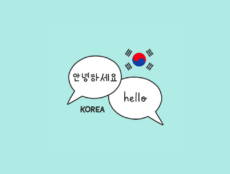
Articles
Op-Ed
Why Districts Need a Cohesive Parent-Teacher Communication Strategy
By Vlada Lotkina
October 31, 2020
School systems and districts in the United States can struggle to change their parent-teacher communication methods. This pandemic has completely disrupted students’ learning while showing the lack of a consistent and effective communication strategy between schools and families. Most teachers have adapted rather quickly, especially as the main point of contact for families falls on them. Unfortunately, this isn’t enough for those families that are slipping through the cracks. While districts are scrambling to find some way of effective communication, time moves forward at a relentless pace, with or without families and students. There are several reasons why district administrations have to find one cohesive, effective strategy for teachers to communicate with families.
Data Show that Parent-Teacher Communication Has Suffered During the Pandemic
Several cities and states have reported through surveys that the communication channels between school and students has been minimal, poor quality, or not helpful during these times. A recent article published by KCUR in Kansas City, Missouri stated, “there are districts where educators haven’t made contact with 25% of their students, including Kansas City Public Schools.” The Education Trust West conducted an online survey of 1,200 parents of school-aged children living in California and published results in April. Of those surveyed, 30% of parents stated they have not been contacted by anyone from the school.
To intentionally promote conversation at home, I send an email on Fridays with a list of 2-4 questions for parents/guardians to ask their child about their week. Range of academic and #SEL questions. Communication from teacher to parent to student and back is key! #masterychat
— Maggie Lee McHugh, NBCT (@maggieleemchugh) October 30, 2020
In New Mexico, over 21,000 parents of children enrolled in K-12 school were surveyed through Tripod Education about their general satisfaction with school prior to the pandemic and after. When asked if “my child’s school provides guidance and resources in a language that is accessible to me and my family,” only 27% agreed or strongly agreed. Before the pandemic, 89% of parents strongly agreed or agreed with accessibility of guidance. Increasing parent communication has proven to have lasting effects with student engagement in schools. According to results from a study done by Center from American Progress, “Clear and consistent communication about different issues—from academic progress to student behavior to daily logistics—is an important tool for building trust between parents and schools and increasing family engagement.”
Existing Communication Methods Were Not Ready for Lockdown
Students not showing up to class is especially dire over the long-term because school districts heavily rely on attendance-based state funding. If students do not show up, school districts will lose out on significant funding for the next school year. With an effective communication system in place, some of these families could be located and given access to district-provided services such as meals, hotspot usage, and educational resources. If districts prioritized communicating with families consistently through one or two avenues, with up-to-date contact information, maybe some of these students who fell off the radar would be found.
With the need for a high student attendance level, additional pressure is put on the district, schools, and teachers to locate families. A school’s parent-teacher communication strategy has to be useful for classrooms and schools to run smoothly, regardless of whether students are learning at home or in person. We have found that parents find it confusing and frustrating when their child(ren)’s teachers and schools all have different ways of communicating with the family. Even worse, many districts are using outdated, one-way communication with parents in the form of paper flyers, phone trees, virtual meetings with muted participants, mass emails, blog posts, and other one-way methods.
Until recently Lincoln Public schools' efforts to prevent COVID spread in its buildings had been successful but there have been growing concerns about how much information LPS is actually communicating with parents and teachers.https://t.co/hqulU2ZHjb
— NTV News (@NTVNEWS) October 28, 2020
According to an Apptegy report about multi-level communication methods, “too often, school handouts get lost in students’ backpacks, newsletters are misplaced, and information told by another parent can be quickly forgotten or totally misconstrued.” The national study by the Center for American Progress cited above surveyed six different Title One public schools from across the country and reported on the findings in February of 2020. The group surveyed over 900 parents, 400 teachers, and 400 school leaders seeking to understand several factors dealing with student, parent, and school engagement strategies within the districts and communication methods. The results indicated that the most commonly used methods of parent-teacher communication was through “parent teacher conferences and personalized emails or calls with 89% of parents, 85% of teachers, and 97% of school leaders reporting that conferences were mostly or extremely valuable. After that, paper and website were commonly used among these three groups with only 71% of parents, 60% of teachers, and 68% of school leaders” said paper communication was mostly or extremely valuable.
One of the key researchers in this study named Abby Quirk stated, “what we found was that individualization was more important,” with all audiences surveyed. The most valuable insight into what is important to these families in terms of communication strategies is that individualized or interpersonal communication is valued more than one-way communication or mass announcements.
The Benefits of Two-Way Communication
Luckily, there are ways of communicating that meet the 21st century needs of both school districts and families. Districts need to be proactive instead of reactive and find more efficient, effective ways of disseminating information. Accountability, transparency, and efficiency should be the top priorities when creating an effective communication strategy with families. While families do not want to be bombarded with the school’s messages, they want to be informed. Implementing weekly emails, accessing Google Voice, making “genius” hours, and office hours daily are a few but a few simple solutions that make communication accessible and inclusive.
A better solution is a dedicated parent-teacher communication app that is effective at every school community level. Teachers can post announcements, coordinate events, or send 1:1 communications with parents. Districts and schools can have a platform for two-way communication, centering their plan on one app that will serve all communication purposes. Most importantly, having a dedicated all-in-one communication app with reporting can provide clarity and transparency while helping find families most in need of support.
Creating a cohesive parent-teacher communication strategy, coupled with an all-in-one platform, is a long-term solution to the ongoing problem.
About the author: Vlada Lotkina is the founder and CEO of ClassTag. Now supporting 25,000+ schools, ClassTag is a communication platform designed to fuel and inspire parent engagement and community. ClassTag is engineered to provide school leaders, parents, and teachers a streamlined, accessible communication channel that can be customized to the needs of each family, including automatic translation in 60+ languages and multi-channel reach via SMS, email, the app, or web.
Featured Image: Jeswin Thomas, Unsplash.









No Comments